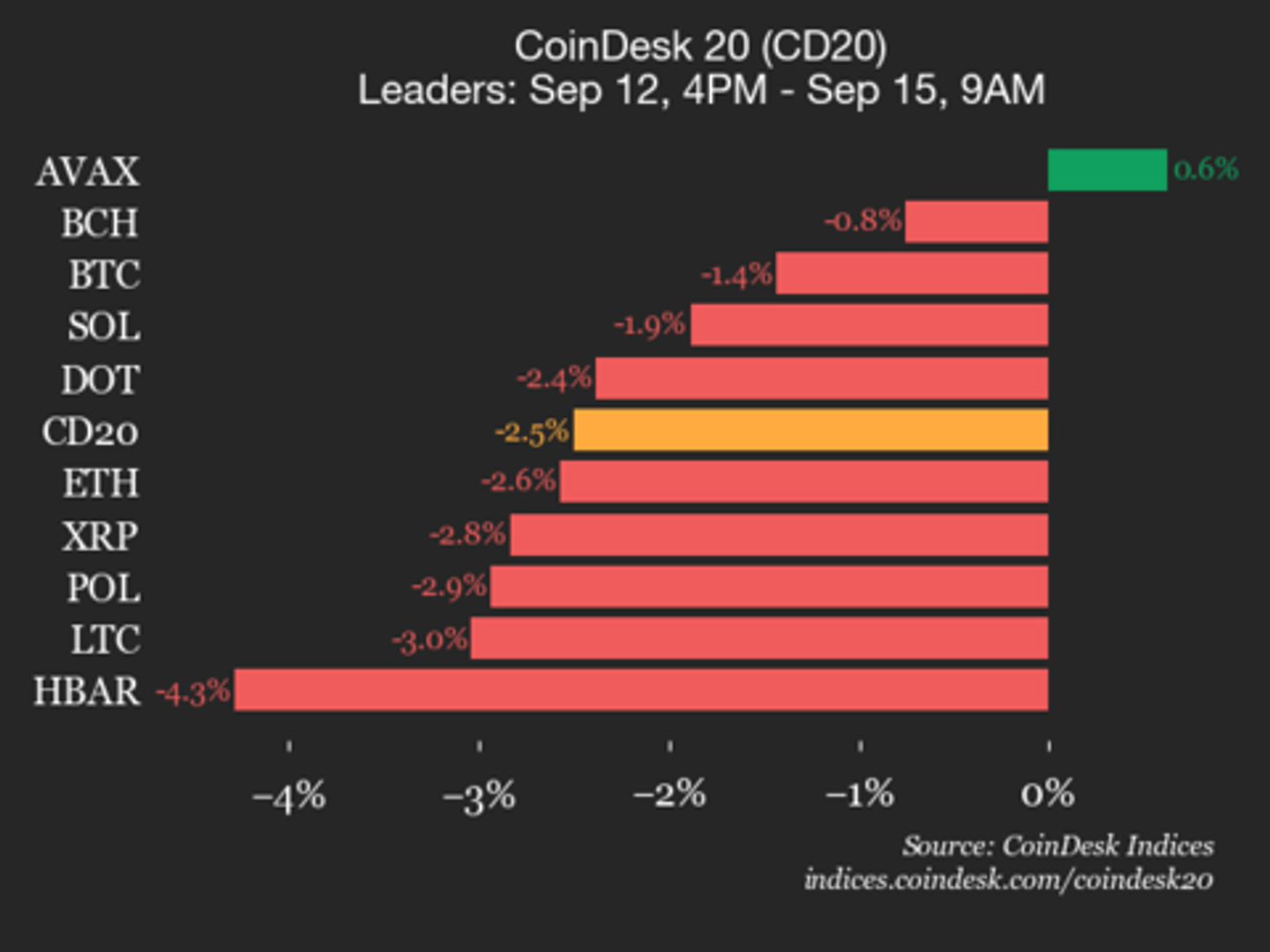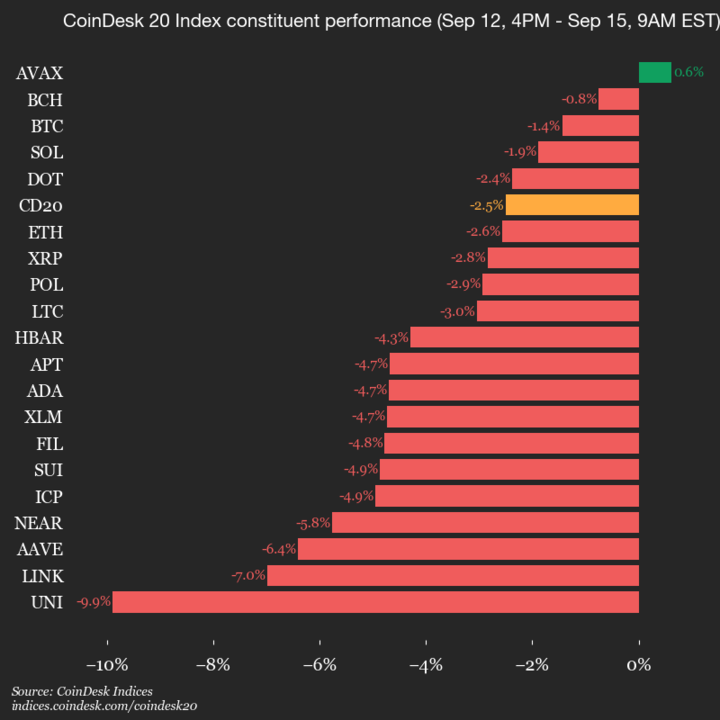Uncategorized
LinksDAO Plans to Launch a Community Token on Base

LinksDAO is launching its own community token, adding a highly tradeable asset alongside its nearly 10,000 membership non-fungible token (NFTs) this crypto golf club tried selling to fund its mantra: «We’re gonna buy a golf course.»
NFTs aren’t as trending as they were in early 2022 when LinksDAO sold its membership tokens for $10 million. The market euphoria that led raunchy Beeple artwork to nab hundreds of millions of dollars at auction moved on long, long ago.
CryptoSlam’s NFT Index is down nearly 97% since its inception in January 2022, showing how market interest is now elsewhere. Memecoins now dominate crypto’s short attention span economy; even Trump has one. Now LinksDAO will have one too, with LINKS.
«We are going to be launching a community token that has deep culture, that’s embedded in the game of golf, that’s embedded in the community, and that’s permissible under the fucking regulations that we have to deal with,» LinksDAO founder Mike Dudas said on a community call late Tuesday.
The coin is expected to launch in the coming months on the Base blockchain. A third of its supply is earmarked for LinksDAO NFT holders, with smaller allocations for members of other NFT communities, including Pudgy Penguins and Bored Ape Yacht Club.
Any successful crypto coin inevitably lives or dies as a financial instrument, even when its promoters – right up to the President of the United States – attempt to insist otherwise in the fine print. For their part, LinksDAO’s suits proclaimed LINKS was not «speculative» nor an investment.
Instead, they’re calling it a community «enhancer:» a way to broaden the reach of a crypto club that managed to weather the bear market less because of the enduring appeal of NFTs than the growing power of golf.
«The goal is to have every single golfer have LINKS in their crypto wallet,» said head of community and co-founder Cooper Sherwin.
LinksDAO bought a golf club in Scotland in mid-2023. The club’s executives recently signed an agreement to become partial owners of a second course in Kansas City. That deal is subject to a vote by LinksDAO’s NFT-holding members, said Sherwin.
Hillcrest Golf Course is an 18-hole course designed by an architect from golf’s so-called Golden Age, Donald Ross in 1915.
He once called it the finest course in the world, but it fell into disrepair over the ensuing century, according to project members.
That created an opportunity for LinksDAO to cut a deal. Current owner Robb Heineman – a Kansas City businessman who also owns that city’s Major League Soccer team – closed the club down for a few years back to pursue a $30 million renovation project.
Heineman did not return a call from CoinDesk. In a press release, he said LinksDAO «shares our forward-thinking vision for what a golf club can be.»
LinksDAO will become a minority owner of Hillcrest and gain a board seat, though project leads declined to share specific financials behind the deal. The deal will seek the approval of LinksDAO’s NFT holding members, who vote on proposals but don’t have full legal power over the project’s decisions.
Some 200 members showed up on Tuesday night to hear the dual announcement of course acquisition and token. That means LinksDAO is not actually a «decentralized autonomous organization,» but instead a kind of affinity club for people at the intersection of crypto and golf.
Hillcrest’s national membership program will become a LinksDAO operation open only to holders of its NFTs.
Uncategorized
CoinDesk 20 Performance Update: Index Drops 2.5% as Nearly All Constituents Decline

CoinDesk Indices presents its daily market update, highlighting the performance of leaders and laggards in the CoinDesk 20 Index.
The CoinDesk 20 is currently trading at 4248.74, down 2.5% (-109.09) since 4 p.m. ET on Monday.
One of 20 assets is trading higher.

Leaders: AVAX (+0.6%) and BCH (-0.8%).
Laggards: UNI (-9.9%) and LINK (-7.0%).
The CoinDesk 20 is a broad-based index traded on multiple platforms in several regions globally.
Uncategorized
Pantera-Backed Solana Treasury Firm Helius Raises $500M, Stock Soars Over 200%

Helius Medical Technologies (HSDT) announced on Monday it’s raising more than $500 million in a private financing round to create a Solana-focused treasury company.
The vehicle will hold SOL, the native token of the Solana blockchain, as its reserve asset and aims to expand to more than $1.25 billion via stock warrants tied to the deal, the press release said.
The financing was led by Pantera Capital and Summer Capital, with participation from investors including Animoca Brands, FalconX and HashKey Capital.
Shares of the firm rallied over 200% above $24 in pre-market trading following the announcement. Solana was down 4% over the past 24 hours.
The firm is joining the latest wave of new digital asset treasuries, or DATs, with public companies pivoting to raise funds and buy cryptocurrencies like bitcoin (BTC), ether (ETH) or SOL.
Helius is set to rival with the recently launched Forward Industries (FORD) with a $1.65 billion war chest backed by Galaxy Digital and others. That firm confirmed on Monday that has already purchased 6.8 million tokens for roughly $1.58 billion last week.
Helius’ plan is to use Solana’s yield-bearing design to generate income on the holdings, earning staking rewards of around 7% as well as deploying tokens in decentralized finance (DeFi) and lending opportunities. Incoming executive chairman Joseph Chee, founder of Summer Capital and a former UBS banker, will lead the firm’s digital asset strategy alongside Pantera’s Cosmo Jiang and Dan Morehead.
«As a pioneer in the digital asset treasury space, having participated in the formation of the strategy at Twenty One Capital (CEP) with Tether, Softbank and Cantor, Bitmine (BMNR) with Tom Lee and Mozayyx as well as EightCo (OCTO) with Dan Ives and Sam Altman, we have built the expertise to set up the pre-eminent Solana treasury vehicle,» Cosmo Jiang, general partner at Pantera Capital, said in a statement.
«There is a real opportunity to drive the flywheel of creating shareholder value that Michael Saylor has pioneered with Strategy by accelerating Solana adoption,» he added.
Read more: Solana Surges as Galaxy Scoops Up Over $700M Tokens From Exchanges
Uncategorized
Boundless Launches Mainnet on Base, Ushering in Universal Zero-Knowledge Compute

Boundless, the zero-knowledge (ZK) compute marketplace incubated by RISC Zero, has officially launched its Mainnet on Base, giving every blockchain access to verifiable compute.
The milestone builds on the network’s incentivized testnet, which went live in July and stress-tested Boundless’ architecture under real-world conditions.
During that Beta phase, Boundless operated like a decentralized marketplace where developers seeking ZK proofs for applications such as rollups, bridges and privacy protocols could connect with independent provers, or ZK miners, who generated those proofs.
The launch introduced Proof of Verifiable Work, an incentive mechanism that rewards provers based on the volume, speed and complexity of their computations. Community participation was strong, fueled in part by the anticipation of $ZKC token rewards.
With Monday’s mainnet launch, those capabilities are now operational at scale. The team behind Boundless says it can deliver verifiable compute across chains, enabling developers to build applications that preserve privacy while scaling seamlessly between ecosystems.
Some key protocols have started to integrate Boundless into their systems. Wormhole is integrating Boundless to add ZK verification to Ethereum consensus, making cross-chain transfers more secure.
BOB, a hybrid Bitcoin rollup, is tapping Boundless to allow EVM applications to interoperate with Bitcoin using proofs that inherit Bitcoin’s security while drawing on Ethereum’s liquidity. And staking protocol Lido is deploying Boundless to secure validator exits with transparent proofs, strengthening trust and auditability for its crypto assets.
“For the first time, developers on any chain can access abundant zero-knowledge compute to build complex applications that scale across ecosystems without sacrificing decentralization,” said Shiv Shankar, the CEO of Boundless.
Read more: Risc Zero’s ‘Boundless’ Incentivized Testnet Goes Live
-

 Business11 месяцев ago
Business11 месяцев ago3 Ways to make your business presentation more relatable
-

 Fashion11 месяцев ago
Fashion11 месяцев agoAccording to Dior Couture, this taboo fashion accessory is back
-

 Entertainment11 месяцев ago
Entertainment11 месяцев ago10 Artists who retired from music and made a comeback
-

 Entertainment11 месяцев ago
Entertainment11 месяцев ago\’Better Call Saul\’ has been renewed for a fourth season
-

 Entertainment11 месяцев ago
Entertainment11 месяцев agoNew Season 8 Walking Dead trailer flashes forward in time
-

 Business11 месяцев ago
Business11 месяцев ago15 Habits that could be hurting your business relationships
-

 Entertainment11 месяцев ago
Entertainment11 месяцев agoMeet Superman\’s grandfather in new trailer for Krypton
-

 Entertainment11 месяцев ago
Entertainment11 месяцев agoDisney\’s live-action Aladdin finally finds its stars





